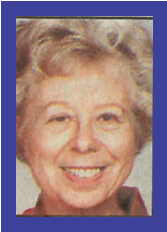The Brisben Center is the greater community’s largest full service, year-round, residential emergency homeless center. This unique facility opened in 2005 as the result of a vision and partnership among the leadership of the nonprofit Thurman Brisben Homeless Shelter, Inc., the City of Fredericksburg and the greater community. In the late 1980s, many downtown faith organizations initially founded the Center, and today 200 area community and faith-based organizations support it across the four-county community. It provides a safe and secure, staffed 24-hour temporary residence for the homeless 365 days a year. It can simultaneously serve up to 80 homeless women, children and men with a wide range of services. The Center is a critical port in the storm for those experiencing homelessness in our community, including many veterans. At Brisben, hundreds of volunteers and supporters from our greater community serve the region’s homeless each year.
The Brisben Center got its start in 1987, when members of six downtown Fredericksburg churches became collectively concerned about the number of people, later estimated to be 500—40% of them women and children—who each year had no permanent shelter. It incorporated the following year as the Church Shelter Board for the Rappahannock Area, Ltd.
Run by volunteers, it operated for the first several years as a cold-weather, nights-only shelter—first at St. George’s Episcopal Church and then at the old Maury School. In 1998, it moved to an 80-bed facility on Essex Street. By then, it was staffed and open 24/7 year-round. It was also renamed the Thurman Brisben Homeless Shelter (dba Thurman Brisben Center) after one of its much-revered founders.
From its genesis, the shelter accepted men, women, and children—individuals and families of nearly every description. With the transition to a full-time facility, however, it soon became clear that long-term, “chronically” homeless individuals with untreated substance abuse and/or serious mental health challenges (less than 14% of the homeless population)
do not mix well with others who are simply trying to get back on their feet financially. Following numerous incidents of shelter violence and substance abuse in 2005, the City imposed random drug/alcohol testing and other restrictions.
Erik Nelson, the City’s senior planner at the time, explained in 2005: “What we found at Thurman was people like mothers weren’t inclined to go to the shelter because they feared for the safety of their kids. It’s unfair to blast the shelter for not serving both populations because realistically it just can’t be done.”
After several years, the Essex Street property was slated for re-development and the Brisben Center was forced again to move. It took four difficult years and many false starts before its current location in the Battlefield Industrial Park was settled—albeit with significant restrictions. Despite the board’s best efforts, a downtown location simply could not overcome a groundswell of opposition. On the other hand, the construction of a Place for Trans- formation from scratch has offered enormous opportunities to resolve homelessness.
Anna Thurman Brisben (1916-1990)
One of the founders of the organization that bears her name, Anna Thurman Brisben made it her mission to help the many homeless men, women, and children she came across from her office at St. George’s Episcopal Church. She listened, counseled, got them medical attention, and helped them apply for social services, helped them get jobs and back on their feet. People who were homeless could always turn to her, and countless did.
The Brisben Center can trace its compassion, integrity, and sheer determination back to this dynamo of a woman. “She was the tiny lady who looked like the wind could blow her over, but when she put her hands on her hips and stared down (actually up at) the men. They would meekly do anything she said!” reminisced a volunteer.
Mrs. Brisben had the wisdom and the vision to understand that it takes community working together to address a tragedy as complex and unremitting as homelessness. Each part of it has a role to play and can, as her father exhorted her to do, “brighten the corner where you are.”

“It was heartening to find such widespread concern in the community for the plight of the homeless. Though the shelter is not a permanent solution, it is a first, emergency measure out of which more permanent solutions are growing.” –Anna Thurman Brisben, 1988
THE BRISBEN CENTER
471 CENTRAL ROAD
FREDERICKSBURG, VIRGINIA 22401
(540) 899-9853